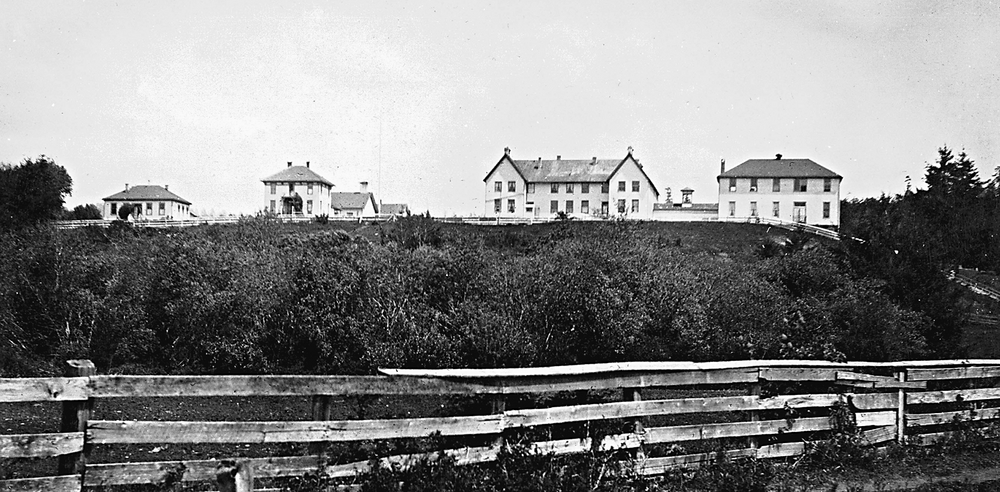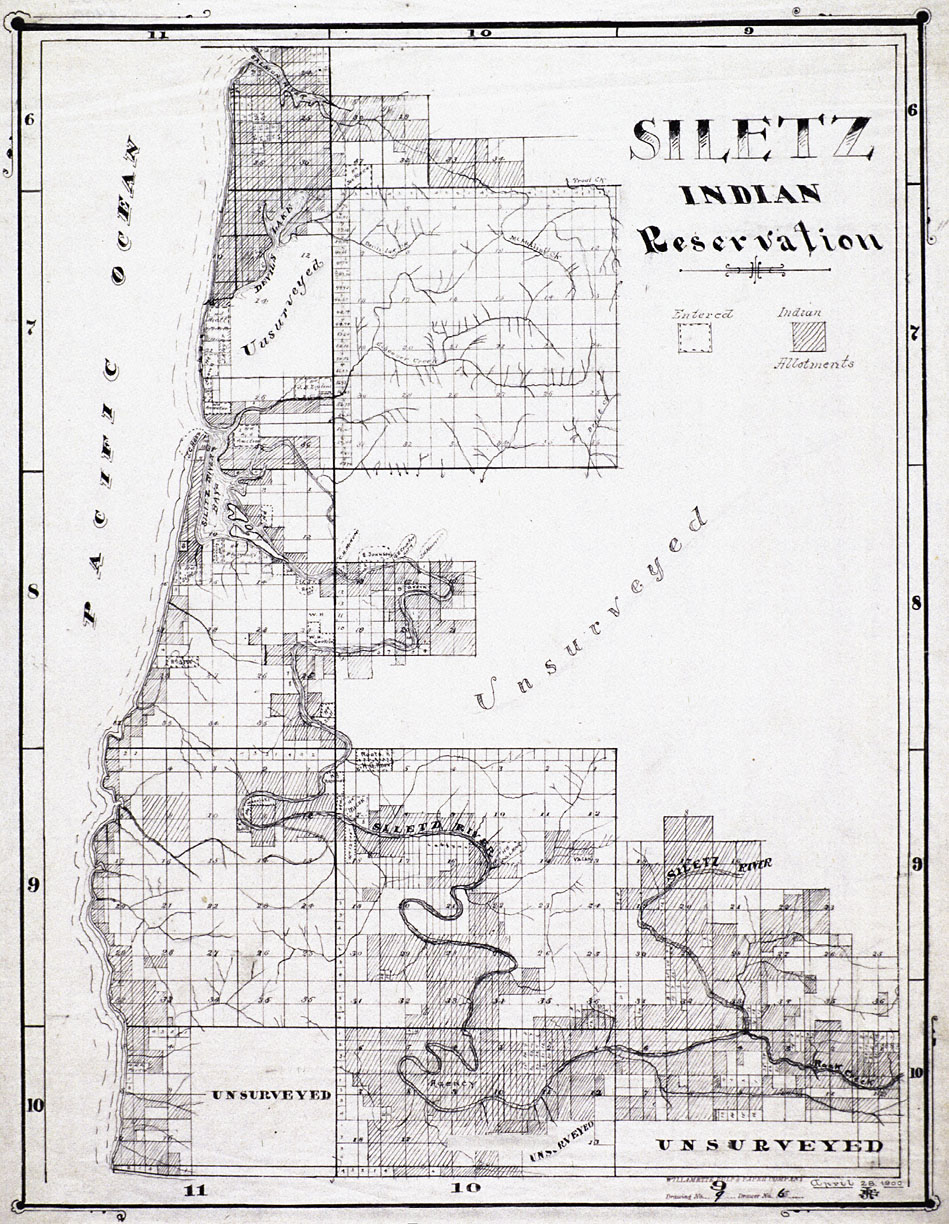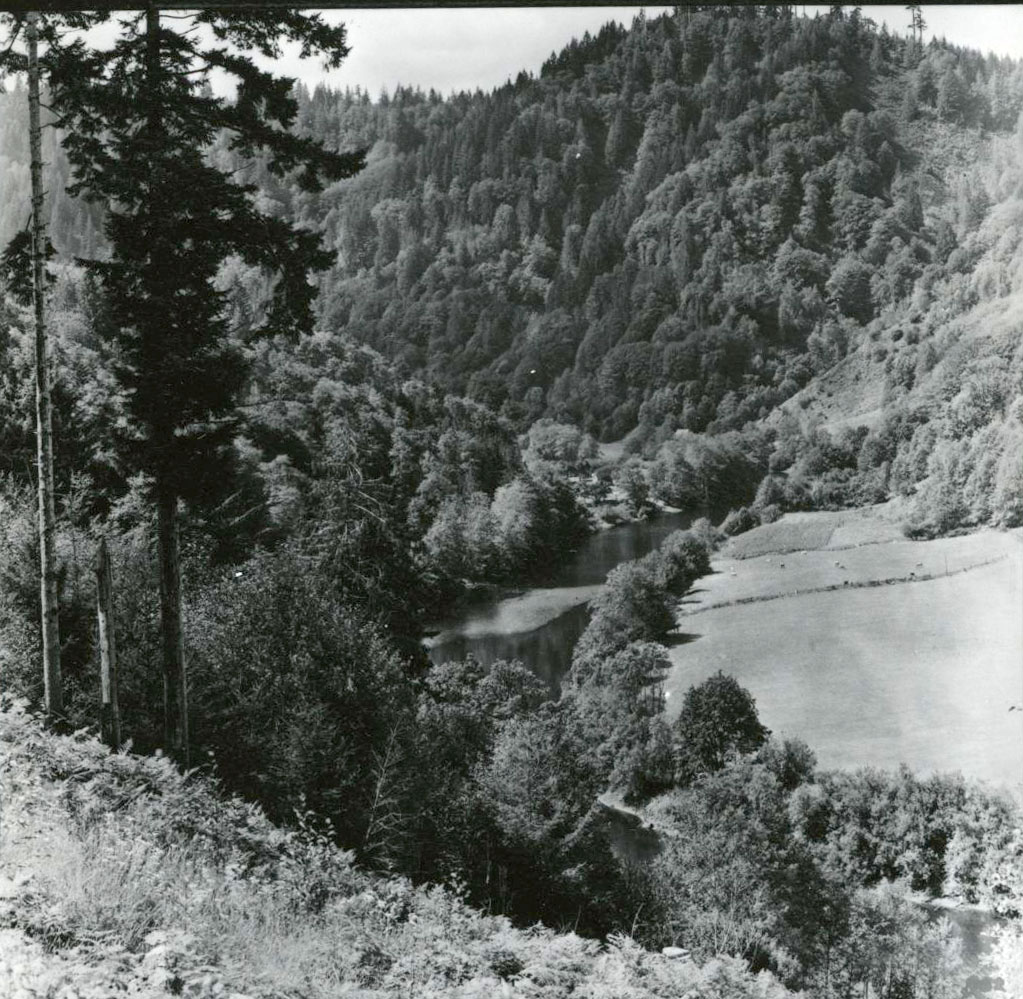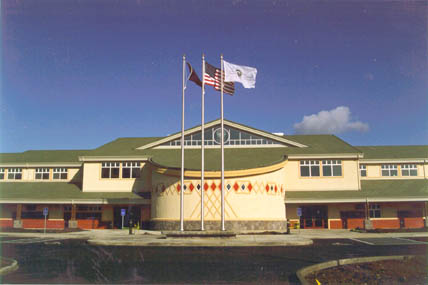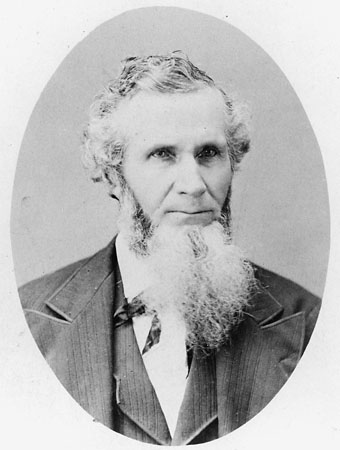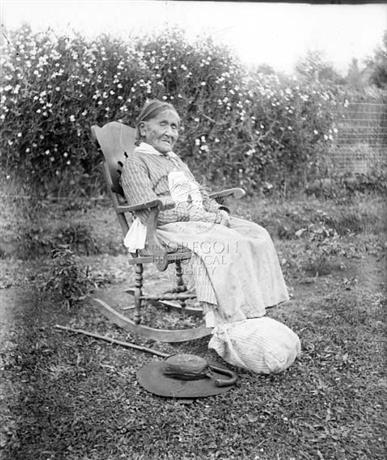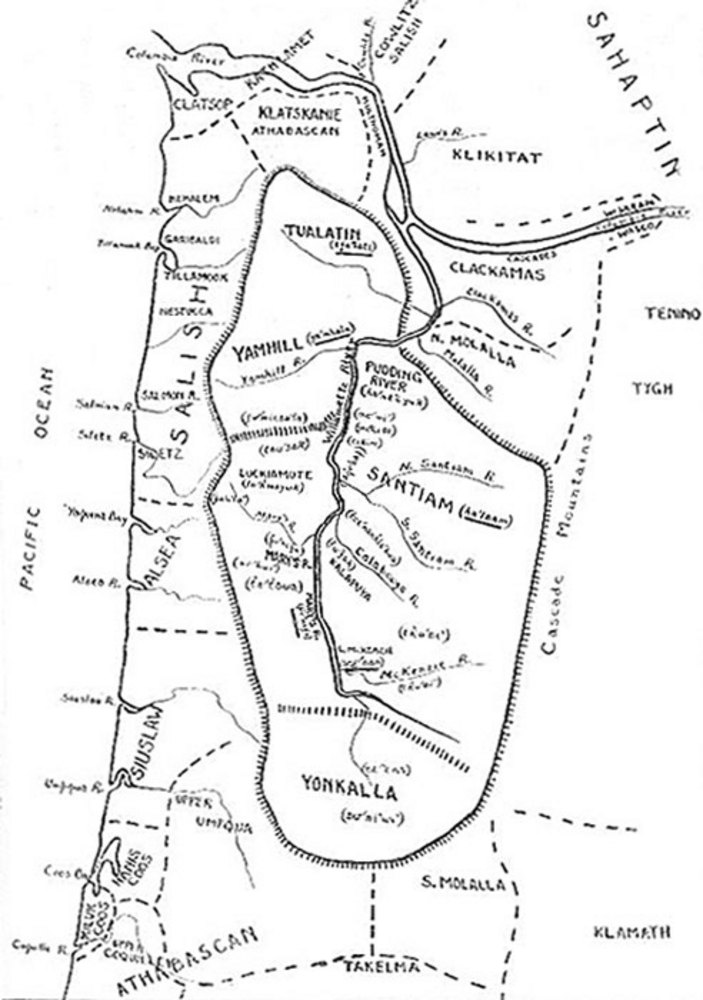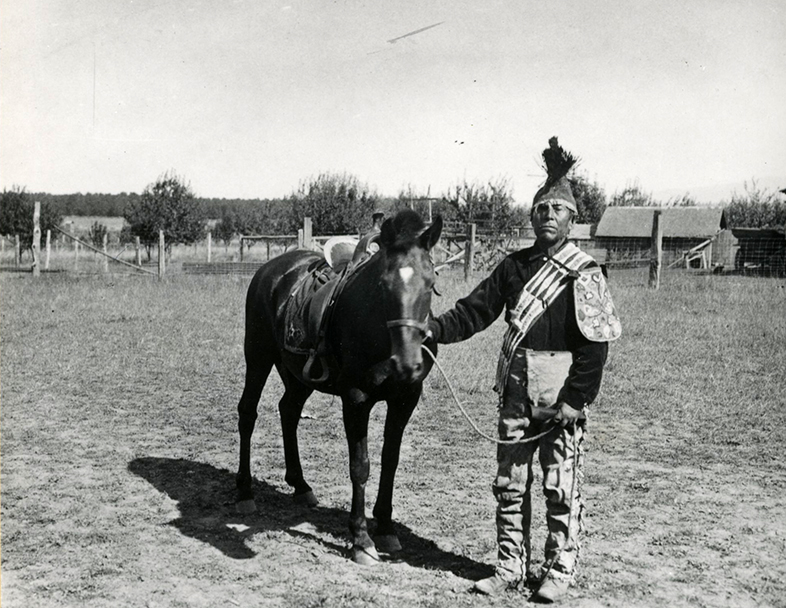Beginning in 1853, Superintendent of Indian Affairs Joel Palmer negotiated treaties with the western Oregon tribes. The treaties stipulated that a permanent reservation, the Coast Reservation, would be set aside for all of the western Oregon tribes; in exchange, the tribes would cede their lands to the United States. The principal tribes that signed the treaties were the Umpquas, Athapaskans, Kalapuyans, Molalas, Chastas, and Chinookans. Eventually, seven treaties were negotiated with the tribes and ratified by Congress. An eighth treaty, the Coast Treaty, was negotiated during the summer of 1855 but was never ratified.
The federal government meant for the Coast Reservation to be the sole permanent reservation in western Oregon for the native peoples of the Willamette Valley, southwestern Oregon, and the coast. Most tribes were removed first to temporary reservations, established while the U.S. Army built the facilities for the permanent reservation. Superintendent Palmer first removed the tribes to the Table Rock Reservation, where the Rogue River, Takelma, and Chasta people lived for about two years (1854-1856). Palmer also removed the Cow Creek Umpqua tribe to a temporary reservation at Calapooia Creek in the Umpqua Valley.
In the spring of 1855, the Rogue River Indian war erupted in southwestern Oregon. White settlers and miners sought to permanently remove Indians from the region, and the tribes sought to defend their land from encroachment. Palmer quickly acted to begin the removal of the tribes from southwestern Oregon. In the summer of 1856, boats transported two large groups of Indians from Port Orford to Portland and then to the Yamhill Valley. Another group was marched to the Siletz coastal area. In early 1856, the tribes that remained on the Table Rock and Umpqua reservations and in the Willamette Valley were later moved to the new temporary reservation in the Yamhill Valley.
On November 9, 1855, President Franklin Pierce signed the executive order establishing the Coast Reservation. Between November 9 and December 21, Superintendent Palmer, in collaboration with U.S. Army General John Wool, decided to add the lands of the Yamhill River Valley to the Coast Reservation, changing the shape of the reservation from a rectangle to an inverted "L." There were two major agencies at the reservation, the Grand Ronde and Siletz agencies, and subagencies at Alsea, Yaquina, and Salmon River. The Coast Reservation contained more than a million acres on the west side of the Coast Range, stretching from Cape Lookout to the mouth of the Siltcoos River. All of the tribes from western Oregon—about twenty-seven tribes—lived there.
Over the next twenty years, the reservation was reduced by several congressional and presidential acts. On June 30, 1857, a presidential executive order created the Grand Ronde Reservation, 108 miles square, which separated the region around the Yamhill Valley from the Coast Reservation. On December 21, 1865, two large sections of land were removed in the central and southern portions. On March 3, 1875, two additional coastal sections were removed, including the Alsea and Salmon River subagencies. The Coast Reservation ceased to exist, and the remaining Indians were removed to the Siletz and Grand Ronde reservations.
-
Siletz Agency, bb006476, 1.
U.S. Government buildings at Siletz Agency. Oreg. Hist. Soc. Research Lib., bb006476
-
![]()
Map of the Siletz Indian Reservation, 1900.
Oregon Historical Society Research Library, Willamette Pulp and Paper Co., Map 259
Related Entries
-
![Alsea Subagency of Siletz Reservation]()
Alsea Subagency of Siletz Reservation
In September 1856, Joel Palmer, the Superintendent of Indian Affairs fo…
-
![Confederated Tribes of Grand Ronde]()
Confederated Tribes of Grand Ronde
The Confederated Tribes of Grand Ronde Community of Oregon is a confede…
-
![Joel Palmer (1810–1881)]()
Joel Palmer (1810–1881)
Joel Palmer spent just over half of his life in Oregon. He first saw th…
-
![Kalapuyan peoples]()
Kalapuyan peoples
The name Kalapuya (kǎlə poo´ yu), also appearing in the modern geograph…
-
![Kalapuya Treaty of 1855]()
Kalapuya Treaty of 1855
The treaty with the Confederated Bands of Kalapuya (1855) is the only r…
-
![Molalla Peoples]()
Molalla Peoples
The name Molalla ([moˈlɑlə, ˈmolɑlə], usually spelled Molala by anthrop…
Related Historical Records
Map This on the Oregon History WayFinder
The Oregon History Wayfinder is an interactive map that identifies significant places, people, and events in Oregon history.
Further Reading
Beckham, Stephen Dow. Requiem for a People: The Rogue Indians and the Frontiersmen. Norman: University of Oklahoma Press, 1971.
Douthit, Nathan. Uncertain Encounters: Indians and Whites at Peace and War in Southern Oregon, 1820s-1860s. Corvallis: Oregon State University Press, 2002.
Kent, William Eugene. The Siletz Indian Reservation, 1855-1900. Newport, Or.: Lincoln County Historical Society, 1977.
Schwartz, E.A. The Rogue River Indian War and its Aftermath, 1850-1980. Norman: University of Oklahoma Press, 1997.

